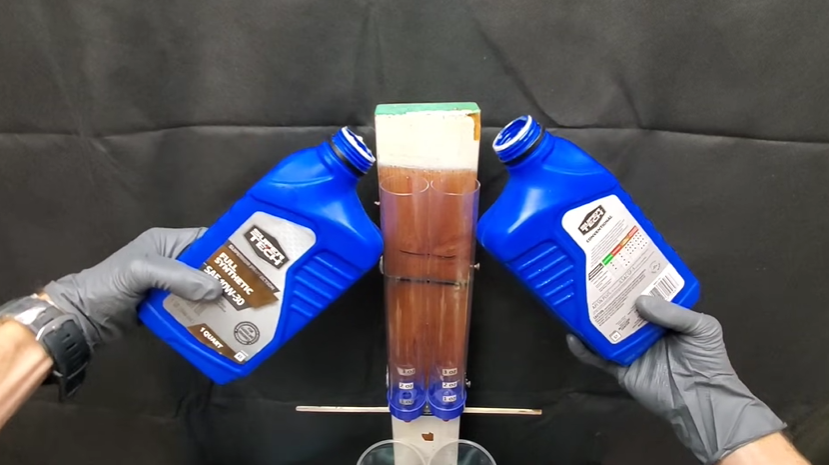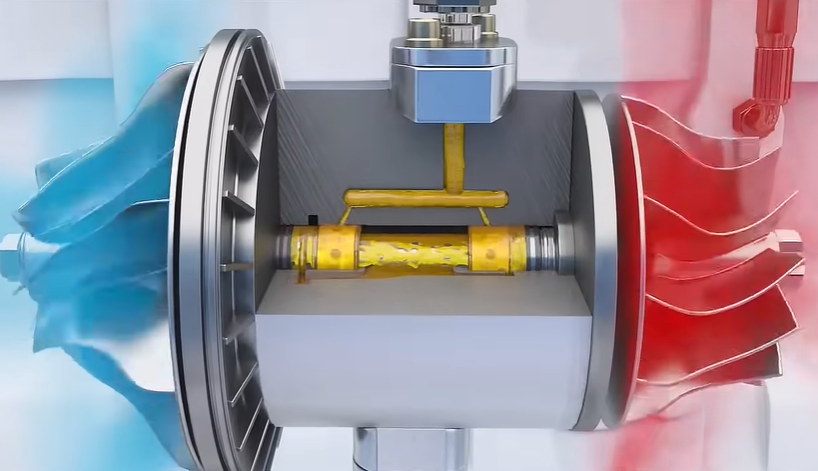An oil catch can is designed to capture and store oil vapours that escape from the engine during the combustion process. By preventing these oil vapours from entering the engine, it is possible to increase horsepower. In addition, an oil catch can also help to improve fuel economy and reduce emissions.
If you’re looking for ways to increase the horsepower in your car, one option you might consider is an oil catch can. An oil catch can is a device that helps to collect and store oil vapours that escape from the engine crankcase. These vapours can build up over time and eventually lead to decreased performance and increased fuel consumption.
By installing an oil catch can, you can help to prevent these issues and keep your car running at its best. There are a few different types of oil catch cans available on the market, so it’s important to choose one that will work best for your car. Some models are designed specifically for certain makes and models of cars, while others are universal.
Once you’ve found the right product for your needs, installation is typically pretty straightforward. In most cases, all you need to do is mount the catch can in a convenient location under the hood and connect it to the engine’s crankcase vent hose. So, does an oil catch can actually increase horsepower?
While there’s no guarantee that it will boost performance in every vehicle, many drivers do report seeing an improvement after installing one. If nothing else, it’s a relatively inexpensive way to improve your car’s performance, potentially, so it may be worth giving it a try!
Does an Oil Catch Can Help Performance?
An oil catch can is a device that is installed in an engine to capture oil and other contaminants that may be present in the crankcase gases before they are recirculated back into the engine. The main purpose of an oil catch can is to prevent these contaminants from entering the engine and causing damage or reduced performance. Oil catch cans were originally developed for race cars, where engines are pushed to their limits and need all the protection they can get.
However, over time, they have become increasingly popular with street cars as well. Many car enthusiasts believe that installing an oil catch can help improve engine performance, especially on turbocharged engines. The theory behind this is that by preventing oily contaminants from being recirculated back into the engine, the intake valves and combustion chamber will stay cleaner.
This should theoretically lead to better airflow and more efficient combustion, which could translate into increased power output. There is some evidence to support this claim. In one study, researchers found that installing an oil catch can on a turbocharged engine resulted in a 5% increase in power output.
However, it’s worth noting that this was a small study with only two engines tested. More research would need to be done to confirm whether or not oil catch cans provide a significant performance boost on street cars. Overall, there is no definitive answer as to whether or not oil catch cans improve engine performance on street cars.
Some people swear by them, while others say they make no difference at all. If you’re interested in trying one out, there’s no harm in doing so – you might find that your car runs a little bit better with one installed!
What are the Benefits of having a Catch Can?
If you’re not familiar with the term, an oil catch can is a device that’s installed between the engine and the crankcase ventilation system. The purpose of an oil catch can is to prevent oil from being drawn into the engine from the crankcase. The benefits of having an oil catch can are two-fold.
First, it helps to keep your engine clean by preventing oil from being drawn into it. Second, it helps to improve your engine’s efficiency by keeping the crankcase ventilated so that heat can escape more easily. Overall, an oil catch can is a worthwhile investment for anyone who wants to keep their engine running smoothly and efficiently.
What is the Disadvantage of an Oil Catch Can?
An oil catch can is designed to collect excess oil and prevent it from entering the engine. However, there are some disadvantages to using an oil catch can. One disadvantage is that it can cause the engine to run leaner if too much oil is collected.
This can lead to engine damage. Another disadvantage is that the catch can itself become clogged with oil, which can reduce its effectiveness or even cause it to fail.
Do Oil Catch Cans Make a Difference?
Oil catch cans are one of those car mods that are often debated – some people swear by them, while others think they’re a waste of money. So, do oil catch cans actually make a difference? In short, yes, oil catch cans can definitely make a difference.
Here’s how they work: as your engine runs, it produces blow-by gases which contain oil vapours. These vapours can build up over time and cause all sorts of problems, like clogged intake valves and decreased engine efficiency. An oil catch can catches these vapours before they have a chance to build up and cause problems.
So, does that mean you should go out and buy an oil catch can for your car? Not necessarily. If your car is relatively new and doesn’t have any major performance issues, you probably don’t need one.
However, if you’ve been having issues with clogged intake valves or decreased engine efficiency, an oil catch can may be a good investment.
Can an oil catch can add horsepower?
Oil Catch Can Pros And Cons
An oil catch can is a device that is installed in vehicles to collect oil and other fluids that may leak from the engine. The main purpose of an oil catch can is to prevent these fluids from reaching the atmosphere, where they can cause pollution. There are both pros and cons to using an oil catch can.
The primary benefit of an oil catch can is that it helps to protect the environment from contamination. By collecting leaking fluids and preventing them from entering the atmosphere, an oil catch can reduce the amount of pollution that results from vehicle use. Additionally, an oil catch can also help to extend the life of your engine by preventing fluid build-up within it.
There are also some drawbacks to using an oil catch can. One potential downside is that if not installed properly, an oil catch can actually increase the risk of engine fires. Additionally, if not regularly emptied, an oil catch can become a breeding ground for bacteria and other microorganisms, which could potentially contaminate your engine’s fluids.
Overall, however, the pros of using an oil catch far outweigh the cons.
Why are Oil Catch Cans Illegal
As of January 1st, 2020, oil catch cans are illegal in California. The regulation, which was first proposed in 2018, affects all vehicles registered in the state of California. Oil catch cans are devices that are installed between the engine and the crankcase ventilation system.
The purpose of an oil catch can is to collect oil and other fluids that would otherwise be emitted into the atmosphere through the crankcase ventilation system. The regulation was enacted to reduce air pollution. Crankcase emissions from vehicles can contribute significantly to smog formation, particularly in areas with high concentrations of vehicle traffic.
Collecting these emissions in an oil catch can reduces the amount of pollutants that are released into the atmosphere. While oil catch cans may be effective at reducing air pollution, they also have some drawbacks. One major concern is that they can potentially increase fuel consumption due to the increased pressure on the engine caused by the collected fluids.
Additionally, if not properly maintained, oil catch cans can become a source of contamination themselves. If you live in California and have an oil catch can installed on your vehicle, you will need to remove it before registering your car or renewing your registration.
Oil Catch Can Damage Engine
An oil catch can is a device used in vehicles to prevent oil and other fluids from entering the intake system. Although they are beneficial, catch cans can also damage your engine if not used correctly. When oil and other fluids enter the intake system, it can cause several problems.
First, it can cause the build-up of deposits on critical components such as valves and piston rings. This can lead to reduced performance and increased fuel consumption. Additionally, these deposits can eventually cause engine failure.
Catch cans work by trapping these oils and fluids before they enter the intake system. However, if they are not properly installed or maintained, they can actually do more harm than good. For example, if the catch can is not vented properly, pressure will build up inside it and could blow out seals or gaskets.
Additionally, if the catch can becomes full of fluid, it could burst and release all of that oil into the engine bay – causing serious damage. To avoid these problems, be sure to install your catch can according to the manufacturer’s instructions. Also, make sure to check it regularly and empty it when necessary.
By following these simple tips, you can help keep your engine safe from harm!
Blow-By Oil Catch Can
If you own a car, you may have heard of the term “blow-by.” But what is blow-by, and why is it important? Blow-by occurs when combustion gases escape past the piston rings and into the crankcase.
These gases contain water vapour, oil, and soot. Over time, this can lead to the formation of sludge and deposits in the crankcase. A catch can helps to prevent these contaminants from building up in your engine by catching and storing them before they can do any damage.
A catch can also help improve your car’s performance by reducing blow-by. Installing a catch can is relatively simple, but it’s important to choose the right one for your car. Be sure to consult with a professional before making any decisions about which catch can is right for you.
Conclusion
An oil catch can is a device that helps to collect oil and other fluids that may escape from your engine. This can help to increase horsepower by keeping these fluids from entering the combustion chamber, where they can cause problems.




Leave a Reply